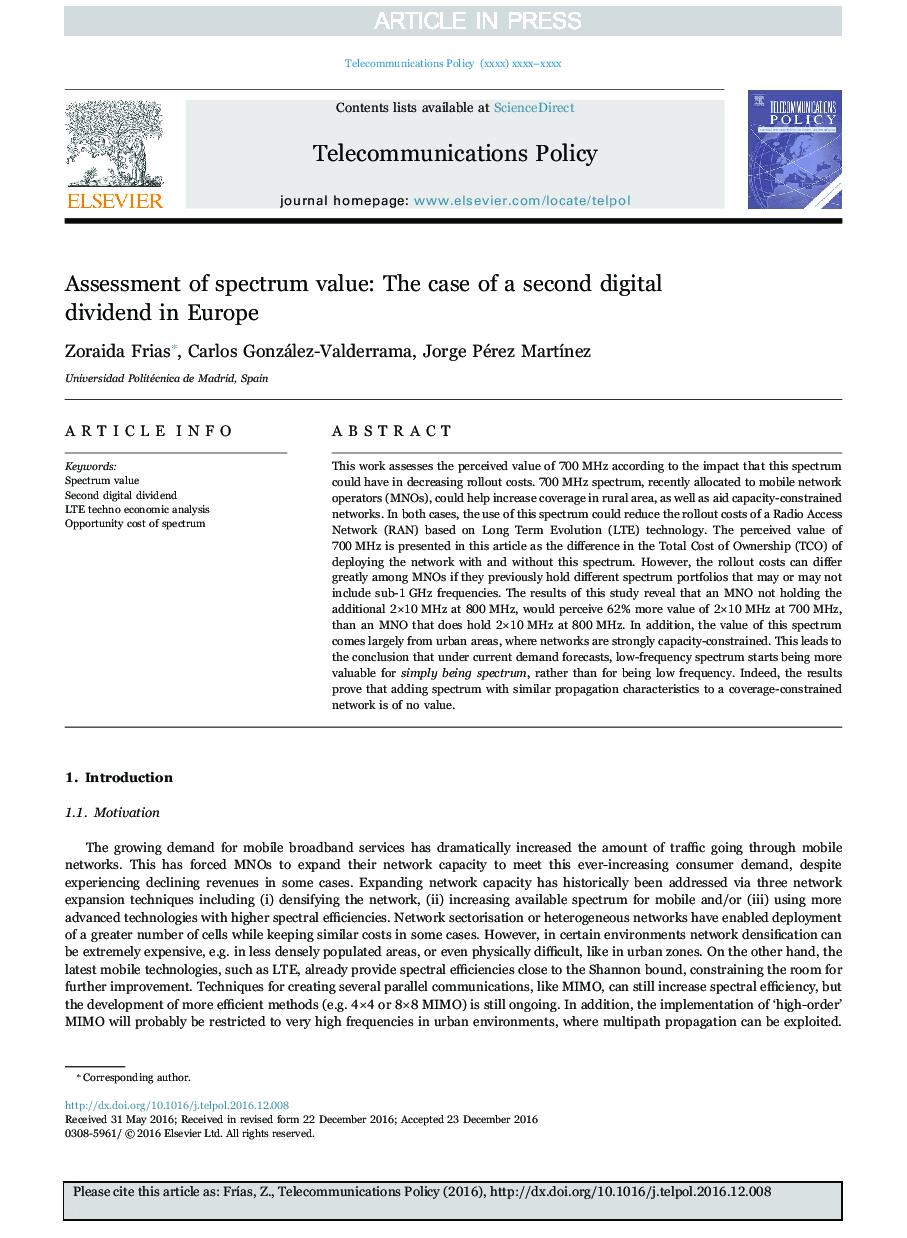| Article ID | Journal | Published Year | Pages | File Type |
|---|---|---|---|---|
| 4973298 | Telecommunications Policy | 2017 | 15 Pages |
Abstract
This work assesses the perceived value of 700Â MHz according to the impact that this spectrum could have in decreasing rollout costs. 700Â MHz spectrum, recently allocated to mobile network operators (MNOs), could help increase coverage in rural area, as well as aid capacity-constrained networks. In both cases, the use of this spectrum could reduce the rollout costs of a Radio Access Network (RAN) based on Long Term Evolution (LTE) technology. The perceived value of 700Â MHz is presented in this article as the difference in the Total Cost of Ownership (TCO) of deploying the network with and without this spectrum. However, the rollout costs can differ greatly among MNOs if they previously hold different spectrum portfolios that may or may not include sub-1Â GHz frequencies. The results of this study reveal that an MNO not holding the additional 2Ã10Â MHz at 800Â MHz, would perceive 62% more value of 2Ã10Â MHz at 700Â MHz, than an MNO that does hold 2Ã10Â MHz at 800Â MHz. In addition, the value of this spectrum comes largely from urban areas, where networks are strongly capacity-constrained. This leads to the conclusion that under current demand forecasts, low-frequency spectrum starts being more valuable for simply being spectrum, rather than for being low frequency. Indeed, the results prove that adding spectrum with similar propagation characteristics to a coverage-constrained network is of no value.
Related Topics
Physical Sciences and Engineering
Computer Science
Information Systems
Authors
Zoraida Frias, Carlos González-Valderrama, Jorge Pérez MartÃnez,
